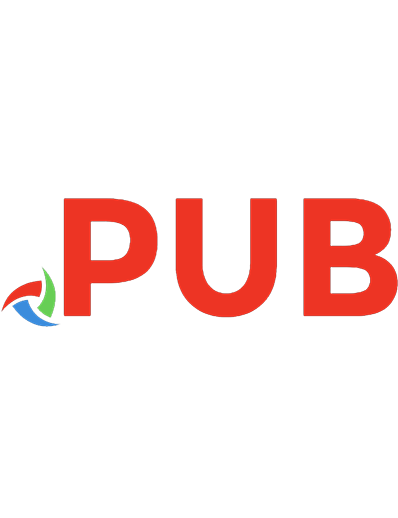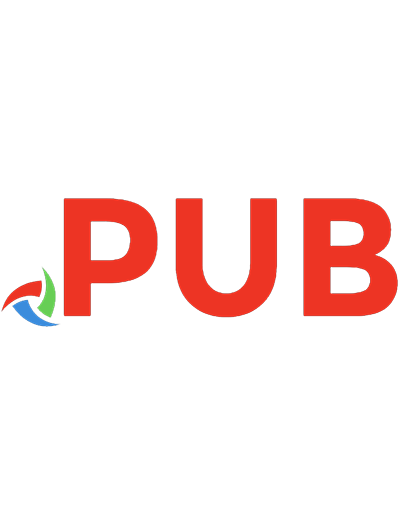Grammar for Teachers: A Guide to American English for Native and Non-Native Speakers [2 ed.] 9783319339160, 2016939041, 9780387763316
Updated and revised with more examples and expanded discussions, this second edition continues the aim of providing teac
892 115 723KB
English Pages 455 Year 2016
Table of contents :
Preface to the Second Edition
Acknowledgments
Contents
1 What Is Grammar?
Abstract
1.1 Section 1: Grammarians and Grammar
1.2 Section 2: Language and Change
1.3 Section 3: Linguists and Grammar
1.3.1 Language Is Rule-Governed
1.4 Section 4: Prescriptive Grammar and Descriptive Grammar
1.4.1 Prescriptive Grammar
1.4.1.1 Who Versus Whom
1.4.2 Descriptive Grammar
1.5 Summary
1.6 Practice Activities
1.7 Answer Key
2 Morphology: Words and Their Parts
Abstract
2.1 Section 1: Word Classes
2.1.1 Context and Function
2.1.1.1 Word Plays and Context: An Additional Illustration
2.1.2 Parts of Speech or Lexical Categories
2.1.2.1 Open Word Classes
2.1.2.2 Closed Word Classes
2.1.3 Major Parts of Speech
2.1.3.1 Nouns
2.1.3.2 Adjectives
2.1.3.3 Verbs
2.1.3.4 Adverbs
2.2 Section 2: Morphology
2.2.1 Bound and Free Morphemes
2.2.2 Derivational and Inflectional Morphemes
2.2.2.1 Derivational Morphemes
2.2.2.2 Inflectional Morphemes
2.3 Summary
2.4 Practice Activities
2.5 Answer Key
3 The Noun Phrase
Abstract
3.1 Section 1: Identifying Nouns
3.1.1 Semantic Clues
3.1.2 Structural Clues
3.1.3 Morphological Clues
3.1.3.1 Derivational Clues
3.1.3.2 Inflectional Clues
3.1.3.3 Possessive ’s
3.2 Section 2: Count, Non-Count, and Crossover Nouns
3.2.1 Count Nouns
3.2.2 Non-Count Nouns
3.2.2.1 Subcategories of Non-Count Nouns
3.2.2.2 Structure Words and Non-Count Nouns
3.2.3 Crossover Nouns
3.3 Section 3: Structure Words that Signal Nouns
3.3.1 Noun Signals
3.3.1.1 Articles: the, a, an
3.3.1.2 Demonstratives: this, that, these, those
3.3.1.3 Quantifiers
3.4 Section 4: Pronouns
3.4.1 Types of Pronouns
3.4.1.1 Subject Pronouns
3.4.1.2 Object Pronouns
3.4.1.3 Possessive Pronouns and Possessive Adjectives
3.4.1.4 Reflexive Pronouns
3.4.1.5 Indefinite Pronouns
3.5 Summary
3.6 Practice Activities
3.7 Answer Key
4 Adjectives and Adverbs
Abstract
4.1 Section 1: Adjectives
4.1.1 Semantic Clues
4.1.2 Morphological Clues
4.1.2.1 Derivational Clues
4.1.2.2 Inflectional Clues
4.1.3 Structural Clues
4.1.4 Order of Adjectives
4.1.5 Special Types of Adjectives
4.1.5.1 Nouns Functioning as Adjectives
4.1.5.2 Participial Adjectives
4.2 Section 2: Adverbs
4.2.1 –ly Adverbs
4.2.2 Subclasses of Adverbs
4.2.2.1 Frequency Adverbs
4.2.2.2 Time and Place Adverbs
4.2.2.3 The “Other” Adverbs
4.2.2.3.1 Degree Adverbs
4.2.2.3.2 Attitude Adverbs
4.2.2.3.3 Focus Adverbs
4.3 Summary
4.4 Practice Activities
4.5 Answer Key
5 Overview of Verbs and Verb Phrases: The Heart of the Sentence
Abstract
5.1 Section 1: Identifying Verbs
5.1.1 Semantic Clues
5.1.2 Morphological Clues
5.1.3 Structural Clues
5.2 Section 2: Main Verbs Versus Auxiliary Verbs
5.2.1 The Primary Auxiliary Verbs Have, Be, Do
5.2.1.1 Do as Verb Helper
5.3 Section 3: Transitive and Intransitive Verbs
5.3.1 Transitive Verbs
5.3.1.1 Distinguishing the Object of a Transitive Verb
5.3.1.2 Di-transitive Verbs (Transitive Verbs with More Than One Object)
5.3.2 Intransitive Verbs
5.3.2.1 Intransitive Verbs and Complements
5.3.3 Verbs that Are Transitive and Intransitive
5.3.4 Linking Verbs
5.4 Section 4: Verbs Followed by Gerunds and Infinitives
5.4.1 Verb/Gerund Variations
5.4.1.1 Verb + Preposition + Gerund
5.4.1.2 Verb + Object + Preposition + Gerund
5.5 Section 5: Phrasal Verbs
5.5.1 Phrasal Verbs Versus Verb + Preposition/Adverb
5.5.1.1 Testing for Phrasal Verbs
5.5.1.1.1 Adverb Insertion
5.5.1.1.2 Substitution
5.5.2 Types of Phrasal Verbs
5.5.2.1 Intransitive Inseparable
5.5.2.2 Transitive Inseparable
5.5.2.3 Transitive Separable
5.6 Summary
5.7 Practice Activities
5.8 Answer Key
6 Time, Tense, and Aspect of Verbs
Abstract
6.1 Section 1: Verbs and Inflections
6.1.1 Time, Tense, and Aspect
6.2 Section 2: Present
6.2.1 Simple Present
6.2.1.1 Uses of Simple Present
6.2.2 Present Progressive
6.2.2.1 Verbs not Used in Present Progressive
6.3 Section 3: Past
6.3.1 Simple Past
6.3.1.1 Pronunciation of –ed
6.3.2 Past Progressive
6.4 Section 4: Future
6.4.1 Will
6.4.2 Be Going To
6.4.3 Present Progressive for Future
6.4.4 Future Progressive
6.5 Section 5: The Perfect
6.5.1 Present Perfect
6.5.1.1 Uses of the Present Perfect
6.5.1.1.1 Stable Time
6.5.1.1.2 Variable Time
6.5.2 Past Perfect
6.5.2.1 Past Perfect Versus Simple Past
6.5.3 Future Perfect
6.5.4 Present Perfect Progressive, Past Perfect Progressive, and Future Perfect Progressive
6.5.4.1 Present Perfect Progressive
6.5.4.2 Past Perfect Progressive
6.5.4.3 Future Perfect Progressive
6.6 Summary
6.7 Practice Activities
6.8 Answer Key
7 Modal Auxiliary Verbs and Related Structures
Abstract
7.1 Introduction
7.2 Section 1: Meanings and Use
7.2.1 Ability
7.2.1.1 Modals
7.2.1.2 Related Structure
7.2.2 Permission and Polite Requests
7.2.3 Possibility or Probability Present Time
7.2.4 Possibility or Probability Past Time
7.2.5 Necessity or Obligation
7.2.5.1 Modal
7.2.5.2 Related Structures
7.2.5.3 Modal with Related Meaning of Necessity or Obligation
7.2.6 Prohibition
7.2.7 Advice or Suggestion
7.2.7.1 Modals
7.2.7.2 Related Structure
7.2.8 Expectation
7.2.9 Unfulfilled Expectation, Mistake
7.2.9.1 Modals
7.3 Section 2: Would and the Conditional
7.3.1 Would
7.3.2 Will
7.3.3 Would and the Conditional
7.3.3.1 Would and if Clauses
7.4 Summary
7.5 Practice Activities
7.6 Answer Key
8 Basic Sentence Patterns and Major Variations
Abstract
8.1 Section 1: Types of Sentence Constituents
8.1.1 Noun Phrases
8.1.2 Prepositional Phrases
8.1.3 Verb Phrases
8.1.4 Adjective and Adverb Phrases
8.2 Section 2: Questions
8.2.1 Yes/No Questions
8.2.1.1 Negative Yes/No Questions
8.2.2 Wh-Questions
8.2.2.1 Who
8.2.2.2 Who Versus Whom
8.2.2.3 What
8.2.2.4 How
8.3 Section 3: The Passive
8.3.1 The Passive and Tense
8.3.2 The Passive Versus the Active
8.3.3 Get
8.3.4 Understanding Passive Use
8.4 Section 4: Substitution
8.4.1 Substitution and the First Auxiliary Rule
8.4.2 Substitution and Inversion
8.4.2.1 So
8.4.2.2 Neither and Either
8.4.2.3 One
8.5 Summary
8.6 Practice Activities
8.7 Answer Key
9 Compound Sentences and Introduction to Complex Sentences: Adverbial Clauses
Abstract
9.1 Section 1: Compound Sentences
9.1.1 Clauses Versus Phrases
9.1.2 Compound Sentences and Coordinators
9.1.3 Transition Words or Phrases
9.1.4 Sentence Position and Punctuation
9.2 Section 2: Complex Sentences
9.2.1 Complex Sentences and Multiple Subordinate Clauses
9.2.2 Subordinate Clauses and Word Order
9.2.2.1 GLUE
9.2.3 Adverbial Clauses of Time
9.2.3.1 When and While
9.2.3.2 Whenever
9.2.3.3 Until
9.2.4 Adverbial Clauses of Contrast
9.2.4.1 Unexpected Result
9.2.4.2 Direct Opposition
9.2.5 Adverbial Clauses of Place
9.2.6 Adverbial Clauses of Cause
9.2.7 Adverbial Clauses of Result
9.2.8 Adverbial Clause of Purpose
9.2.9 Adverbial Clauses of Condition
9.2.9.1 Real Conditions
9.2.9.2 Present Unreal Conditions
9.2.9.3 Past Unreal Conditions
9.2.9.4 Conditional Sentences Without if
9.2.9.5 Pronunciation of Modals in the Conditional
9.2.9.6 Mixed Time
9.2.10 Adverbial Clauses of Manner
9.3 Section 3: Reduced Adverbial Clauses
9.3.1 Reducing Adverbial Clauses
9.3.1.1 Verb Phrase with Auxiliary Be in a Progressive Tense
9.3.1.2 Verb Phrase with Auxiliary Have in a Progressive Tense
9.3.1.3 Verb Phrases with No Auxiliary Verb
9.4 Summary
9.5 Practice Activities
9.6 Answer Key
10 Complex Sentences Continued: Relative Clauses
Abstract
10.1 Section 1: Relative Clauses and Relative Pronouns
10.1.1 Essential and Nonessential Relative Clauses
10.1.1.1 Which Versus That
10.1.2 Relative Pronouns as Subjects and Objects
10.1.2.1 Who Versus Whom
10.1.2.2 Whose
10.1.3 Omission of Relative Pronouns
10.1.4 Building Longer Complex Clauses
10.2 Section 2: Relative Adverbs
10.2.1 Relative Pronouns Instead of Relative Adverbs
10.2.1.1 Where as Relative Adverb Versus Subordinator
10.2.1.2 When
10.3 Section 3: Reduced Relative Clauses
10.3.1 Reducing Relative Clauses
10.3.2 Reducing Passive Relative Clauses
10.4 Summary
10.5 Practice Activities
10.6 Answer Key
11 Complex Sentences Continued: Noun Clauses
Abstract
11.1 Section 1: Noun Clauses
11.1.1 That Noun Clauses
11.1.1.1 That Noun Clause Patterns After Verbs
11.1.1.2 Verbs + Required Indirect Object
11.1.1.3 Verbs + Optional Indirect Object
11.1.1.4 Verbs + to + Optional Indirect Object
11.1.1.5 Other That Noun Clause Patterns
11.1.1.5.1 Be + Adjective + That Noun Clause
11.1.1.5.2 Noun + That Noun Clause
11.1.1.6 The Use of the Simple or Base Verb in That Noun Clauses
11.1.1.7 Omission of That
11.1.2 The Different Functions of That
11.1.2.1 Distinguishing Relative Clauses and Noun Clauses with That
11.1.3 Noun Clauses Derived from Questions
11.1.3.1 Wh-Question Word Noun Clauses
11.1.3.2 Wh + ever Question Word Noun Clauses
11.1.3.3 Yes/No Question Noun Clauses
11.2 Section 2: Reported Speech
11.2.1 Word Order in Reported Speech
11.2.1.1 Statements
11.2.1.2 Questions
11.2.2 Changes Between Direct Speech and Reported Speech
11.2.2.1 Formal Sequencing of Verb Tenses
11.2.2.2 Pronoun and Other Changes
11.2.3 Other Patterns in Reported Speech
11.2.3.1 Imperatives
11.2.3.2 Exclamations
11.2.4 Reported Speech as More Than a Mirror Image
11.3 Summary
11.4 Practice Activities
11.5 Answer Key
12 Verbal Constructions
Abstract
12.1 Section 1: Gerunds and Gerund Phrases
12.1.1 Possessive Gerunds
12.2 Section 2: Participles and Participial Phrases
12.2.1 Types of Participles
12.2.2 Sentence Position of Participial Phrases
12.2.3 Functions of Participial Phrases
12.2.3.1 Participial Phrases Versus Gerund Phrases
12.2.4 Time in Participial Phrases
12.2.4.1 Perfect Participial Phrases
12.2.4.2 Passive Participial Phrases
12.3 Section 3: Infinitives and Infinitive Phrases
12.3.1 Perfect Infinitives and Infinitive Phrases
12.3.2 Sentence Patterns with Infinitive Phrases
12.3.2.1 Infinitives as Direct Objects of Verbs
12.3.2.2 Verb + Indirect Object + Infinitive
12.3.2.3 Verb + (Indirect Object) + Infinitive
12.3.2.4 Infinitives After Be + Certain Adjectives
12.3.3 Base Verbs or “Bare Infinitives” and Causative Verbs
12.4 Summary
12.5 Practice Activities
12.6 Answer Key
Appendix A: Some Patterns of Common Irregular Verbs
Appendix B: The Eight Functions of the Inflectional Morphemes
Appendix C: Essential Spelling Rules: Inflections
Appendix D: The Minor Categories: The Structure Words
Appendix E: Gerunds After Verbs
Appendix F: Wh-question Words
Appendix G: Common Adverbial Subordinators
Appendix H: Summary of Major Learner Difficulties
Glossary
Index
![Grammar for Teachers: A Guide to American English for Native and Non-Native Speakers [2 ed.]
9783319339160, 2016939041, 9780387763316](https://dokumen.pub/img/200x200/grammar-for-teachers-a-guide-to-american-english-for-native-and-non-native-speakers-2nbsped-9783319339160-2016939041-9780387763316.jpg)
![Grammar for Teachers: A Guide to American English for Native and Non-Native Speakers [2 ed.]
9780387763316, 9783319339146, 9783319339160, 2016939041](https://dokumen.pub/img/200x200/grammar-for-teachers-a-guide-to-american-english-for-native-and-non-native-speakers-2nbsped-9780387763316-9783319339146-9783319339160-2016939041.jpg)
![Grammar for Teachers [2 ed.]
9783319339160, 2016939041, 9780387763316](https://dokumen.pub/img/200x200/grammar-for-teachers-2nbsped-9783319339160-2016939041-9780387763316.jpg)
![Grammar for Teachers: A Guide to American English for Native and Non-Native Speakers [2 ed.]
9783319339160, 3319339168](https://dokumen.pub/img/200x200/grammar-for-teachers-a-guide-to-american-english-for-native-and-non-native-speakers-2nbsped-9783319339160-3319339168.jpg)
![Grammar for Teachers: A Guide to American English for Native and Non-Native Speakers [2 ed.]
9783319339160, 3319339168](https://dokumen.pub/img/200x200/grammar-for-teachers-a-guide-to-american-english-for-native-and-non-native-speakers-2nbsped-9783319339160-3319339168-v-8489215.jpg)

![Grammar for Teachers: A Guide to American English for Native and Non-Native Speakers [2ed.]
3319339141, 978-3-319-33914-6, 978-0-387-76331-6, 978-3-319-33916-0](https://dokumen.pub/img/200x200/grammar-for-teachers-a-guide-to-american-english-for-native-and-non-native-speakers-2ed-3319339141-978-3-319-33914-6-978-0-387-76331-6-978-3-319-33916-0.jpg)



